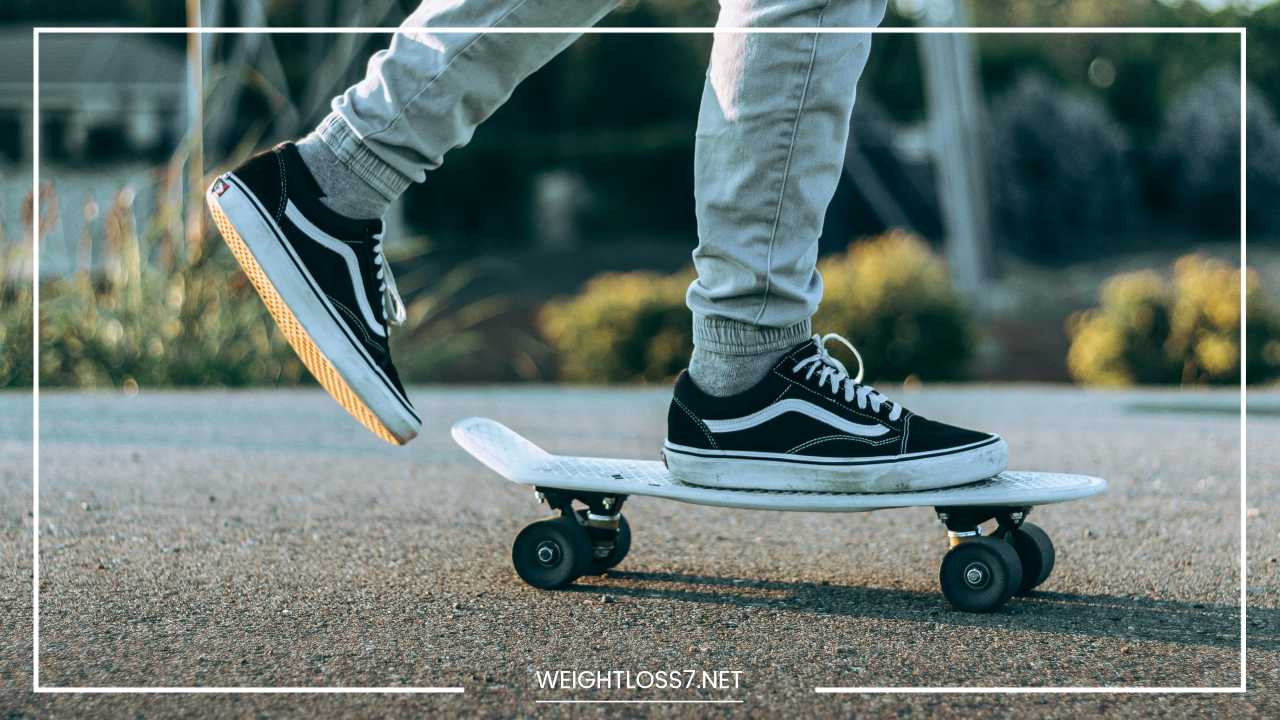Choosing The Right Sports Trainers

Sports Trainers
Choosing the Right Sports Trainers: Your Guide to Peak Performance and Injury Prevention
For any athlete, from weekend warriors to seasoned professionals, having the right footwear is a non-negotiable.
Sports trainers are more than just gym shoes; they provide the critical support, stability, and cushioning needed to perform at your best and minimize the risk of injury.
But with a vast array of options available, navigating the world of sports trainers and selecting the perfect pair can feel overwhelming.
This comprehensive guide will equip you with the knowledge to confidently choose the right sports trainers for your specific needs. We’ll delve into crucial factors like:
- Understanding Your Sport: Different activities demand different functionalities from your trainers. We’ll explore specific considerations for various popular sports.
- Knowing Your Feet: Foot type, arch height, and gait analysis play a significant role in selecting the perfect fit.
- Fit and Comfort: Achieving the perfect fit is paramount for optimal performance and injury prevention. We’ll provide detailed guidance on achieving a comfortable and supportive fit.
- Technology and Features: Explore the latest innovations designed to enhance your training experience, from advanced cushioning systems to energy return technologies.
- Additional Considerations: Durability, budget, brand reputation, and even sustainability practices all come into play when making your final decision.
Finding the Perfect Match: Sport-Specific Considerations
The first step is identifying the sport or activity you’ll be using the trainers for. Each sport places unique demands on your feet, requiring specific features in your footwear:
- Running: We delve deeper into the world of running shoes. Consideration should be given not just to impact absorption but also to the type of running you do. Neutral shoes are ideal for runners with proper arch support, while stability shoes offer additional support for overpronators. Trail running shoes prioritize durability, traction on uneven surfaces, and protection from the elements.
- Tennis: Aggressive lateral movements on the court demand exceptional stability and support. Explore features like a wider base for enhanced balance, a medial post specifically designed for arch support, and a non-marking outsole that ensures superior court grip without leaving scuff marks.
- Basketball: High-top trainers with robust ankle support and a thick, cushioned sole are crucial for the constant jumping and pivoting movements inherent to the game. Breathability and good shock absorption are equally important to prevent overheating and foot fatigue.
- Training: Cross-training shoes provide a versatile blend of features suitable for various activities. They offer flexibility for running drills but also have enough stability for lateral movements and weightlifting exercises. Consider a mid-cut design for additional ankle support during multi-directional movements.
- Hiking: Rugged terrain requires durable trainers with features that can handle the elements. Look for a shoe with good ankle support, a water-resistant or waterproof upper to combat wet conditions, and a lugged outsole for superior traction on uneven surfaces like rocks, mud, and loose gravel.
Understanding Your Feet: The Foundation of Proper Fit
Beyond your chosen sport, your foot type significantly impacts your trainer selection. Here’s how your foot type influences your needs:
- High Arches: Opt for trainers with built-in arch support and a firm midsole to prevent overpronation. Consider motion control shoes, which offer additional features to combat excessive inward rolling of the foot.
- Low Arches: Choose trainers with moderate arch support and good cushioning to absorb shock and provide stability. Look for features like gel cushioning in the heel for added impact absorption.
- Neutral Arches: You have more flexibility in your choice. Neutral trainers provide a good balance of support and flexibility. However, depending on the activity, you may still benefit from additional features like moderate arch support or a wider base for enhanced stability.
Gait Analysis: Your Unique Walking/Running Pattern
Your gait, or how your foot strikes the ground when you walk or run, can also influence your trainer selection.
We discussed the “wet footprint test” as a simple DIY method to determine your gait. However, consulting a podiatrist or a knowledgeable salesperson at a specialty store for a gait analysis is highly recommended.
This will provide a more precise assessment and personalized recommendations based on your individual biomechanics.
Here’s a deeper dive into the three main gait types and their implications for trainer selection:
- Normal Arch: The imprint shows a slight arch with a visible curve on the inner side of the foot. Neutral trainers are typically a good choice for athletes with a normal arch.
- Overpronation: The entire foot or a large portion of it makes contact with the paper during the wet footprint test. Athletes with overpronation should choose trainers with built-in arch support and motion control features to prevent excessive inward rolling of the foot.
- Underpronation: The imprint shows a high arch with a narrow band of contact on the outer side of the foot. Athletes with underpronation (also known as supination) may benefit from stability features but generally don’t require as much arch support as those who overpronate. However, a gait analysis can help determine if a neutral shoe or one with minimal arch support is the best option.
Fit is King: Achieving Comfort and Preventing Injury
A proper fit is paramount for both comfort and injury prevention. Here are some key aspects to consider when trying on sports trainers:
- Size: Don’t rely solely on your usual shoe size. Feet can swell throughout the day, so it’s best to try on trainers later in the afternoon or evening. Get your feet measured professionally, especially if you have wide or narrow feet. A good running store will often offer this service for free.
- Snugness: The trainer should feel snug and secure around your heel and midfoot, with enough wiggle room for your toes in the forefoot. There should be about a half-thumb width of space between your longest toe and the end of the shoe.
- Heel Counter: The heel counter, the part of the shoe that cradles your heel, should comfortably grip your heel to prevent slipping. It shouldn’t dig into your Achilles tendon but should provide a secure fit.
- No Break-In Period: Sports trainers should feel comfortable from the very first wear. Don’t expect them to “break-in” over time. If a trainer feels uncomfortable in the store, it’s unlikely to become magically comfortable with use.
Technology and Features: Optimizing Performance
The world of sports trainers is constantly evolving, with new technologies and features designed to enhance your training experience. Here are some notable examples, along with a more detailed explanation of their benefits:
- Cushioning Systems: Brands like Nike (Air Max), Adidas (Boost), and Brooks (DNA AMP) utilize innovative cushioning technologies to absorb shock and provide a more comfortable ride. These technologies can be found in the heel and forefoot of the shoe, depending on the specific needs of the activity.
- Energy Return: Some trainers incorporate materials like Pebax foam or TPU plates that return energy with each step, propelling you forward and potentially improving efficiency. This can be particularly beneficial for running shoes where maximizing energy return can translate to improved performance.
- Stability Features: Medial posts and wider bases enhance stability and prevent overpronation for athletes with low arches. These features are often found in motion control shoes designed specifically to combat excessive inward rolling of the foot.
- Breathable Uppers: Engineered mesh materials allow for optimal airflow and prevent overheating during exercise. Look for uppers made from lightweight, breathable materials like synthetic mesh or knit fabrics.
- Seamless Construction: Seamless construction techniques can minimize irritation and chafing, especially during long runs or intense workouts.
- Reflective Materials: Trainers with reflective materials can enhance visibility during low-light conditions, improving safety for runners or walkers who exercise before sunrise or after sunset.
Additional Considerations: Durability, Budget, Brand, and Sustainability
While finding the perfect fit and features are crucial, several other factors come into play when making your final decision:
- Durability: Consider how often you’ll be using the trainers and the intensity of your workouts. Running shoes, for example, typically need to be replaced more frequently than trainers used for weightlifting or low-impact activities.
- Budget: Sports trainers can range in price from a budget-friendly option to a high-performance model with all the latest bells and whistles. Determine your budget beforehand and look for trainers that offer the features you need at a price point you’re comfortable with.
- Brand Reputation: Popular brands like Nike, Adidas, Brooks, Asics, and Saucony have a long history of producing high-quality sports trainers. However, there are also many smaller, innovative brands offering excellent products. Read reviews and do your research to find a brand that aligns with your needs and preferences.
- Sustainability: For the eco-conscious athlete, some brands are now using recycled materials in their trainers and implementing sustainable manufacturing practices. Consider these factors if environmental responsibility is important to you.
Bonus: Taking Care of Your Sports Trainers
Just like any other piece of equipment, proper care of your sports trainers will extend their lifespan and optimize their performance. Here are some tips:
- Rotate Your Trainers: Don’t wear the same pair of trainers every day. Allow them to air out for at least 24 hours between uses to prevent moisture build-up and odor.
- Cleaning: Wipe down your trainers with a damp cloth after each use to remove dirt and sweat. For a deeper clean, some trainers can be washed in a washing machine on a gentle cycle (always check the care instructions on the shoe).
- Drying: Never put your trainers in the dryer, as the heat can damage the materials. Allow them to air dry naturally, preferably out of direct sunlight.
- Replace the Insoles: Over time, insoles can lose their cushioning and support. Replace them with new insoles, especially if you notice a decrease in comfort or shock absorption.
- Store Properly: When not in use, store your trainers in a cool, dry place. Avoid storing them in extreme temperatures or direct sunlight.
Going the Extra Mile: Advanced Considerations for Serious Athletes
For athletes who train intensely or compete at a high level, there might be additional factors to consider:
- Custom Orthotics: If you have specific foot problems or require extra support, a podiatrist can create custom orthotics that can be inserted into your trainers for optimal comfort and alignment.
- Spiked Trainers: For track and field events, spiked trainers provide superior traction on the track surface. Choose spikes appropriate for your specific event, as different distances and disciplines require different spike configurations.
- Minimalist Trainers: Some athletes, particularly runners, prefer minimalist trainers that offer a barefoot-like experience. These trainers have a thin sole and minimal cushioning, allowing for a more natural running form. However, minimalist trainers are not for everyone and require a proper transition period to avoid injury.
By following these tips and considering the additional factors for serious athletes, you can ensure your sports trainers become a trusted partner in your training journey, helping you reach your full potential.
Final Word: Choosing the Right Trainers for You
By considering the factors outlined above, you can confidently choose the right sports trainers for your specific needs.
Remember, the perfect trainer is the one that feels comfortable, provides the support and stability you require for your chosen activity, and helps you achieve your fitness goals.
Don’t hesitate to seek guidance from a knowledgeable salesperson at a specialty store or consult a podiatrist for a personalized gait analysis. Happy training!

















